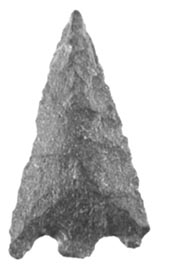

So what did we learn from the excavations at DhRl 16?
People started using the Scowlitz site three thousand years ago. That is a really long time, and it is likely that over all that time the uses of the site would change. This is a common pattern. If you live in Vancouver, you might be able to think of places in the city that changed over time. For instance, the area around False Creek used to be used for industrial purposes, especially for making barrels. Then it was used for the site of the 1986 Expo fair, you can still see Science World there, which was part of Expo. Now False Creek is an expensive area with a lot of new condos and recreational facilities.
Skowlitz started out as a residential occupation. Archaeologists could tell this using stratigraphy and radiocarbon dating, which you've already learned about. Then about 1800 years ago the houses stopped being used there. Later people started to construct impressive burial mounds and cairns. 500 years after it started being used as a burial ground people were still burying their dead there, but archaeologists can find signs of resource processing from this time too. By the time that Europeans arrived it was still being used as a fishing camp and a cemetery.
To find out more about the different phases of occupation, the techniques used at the site, and the artefacts that were recovered, click below.
Houses Burials Floatation Device Preservation